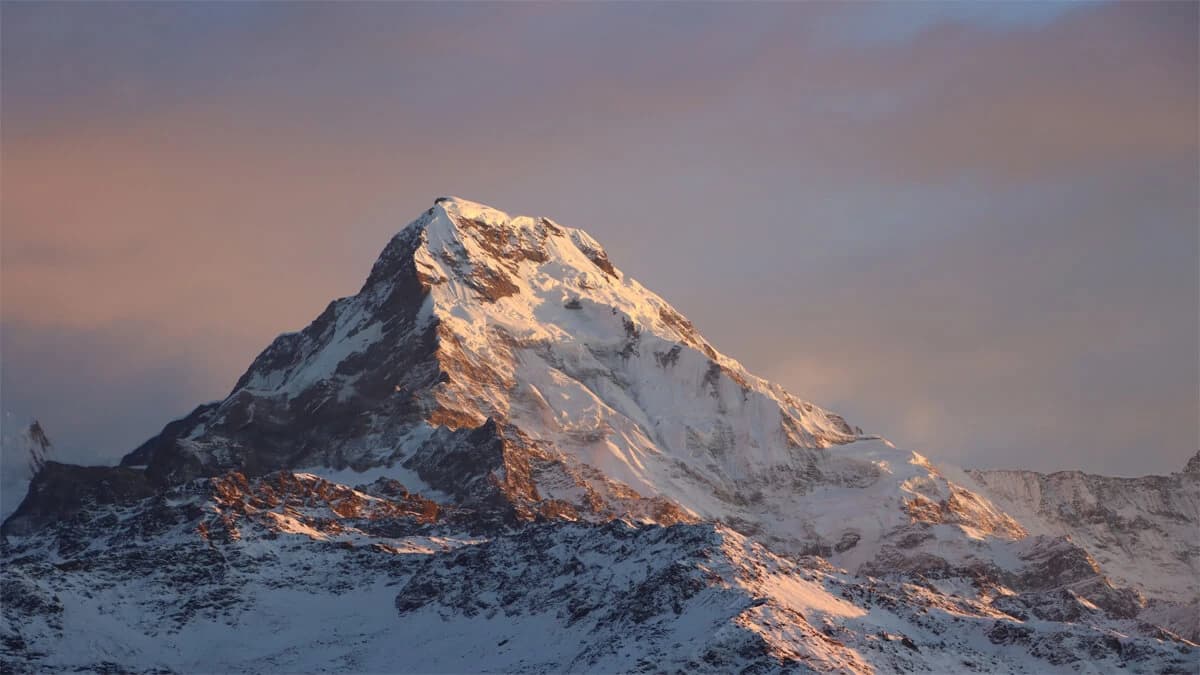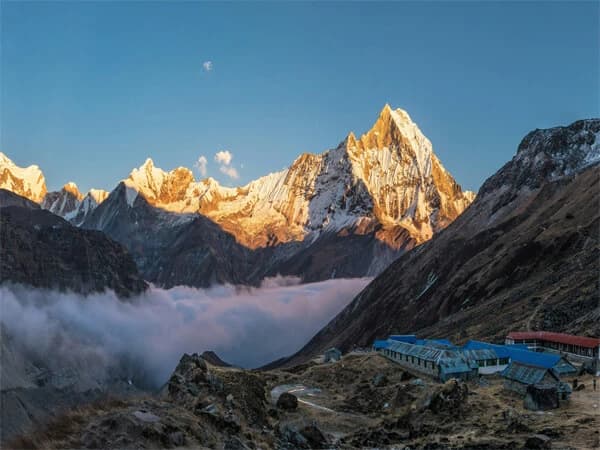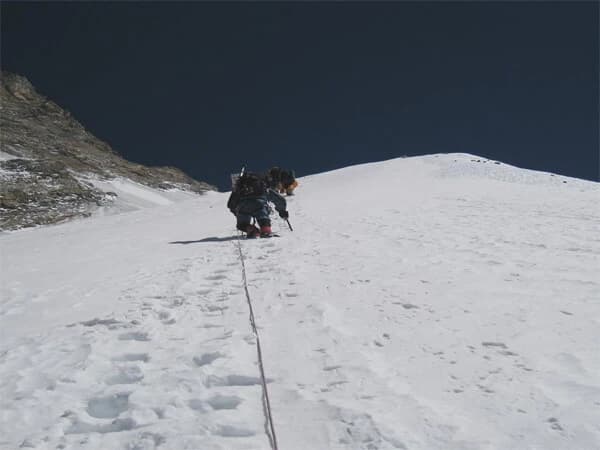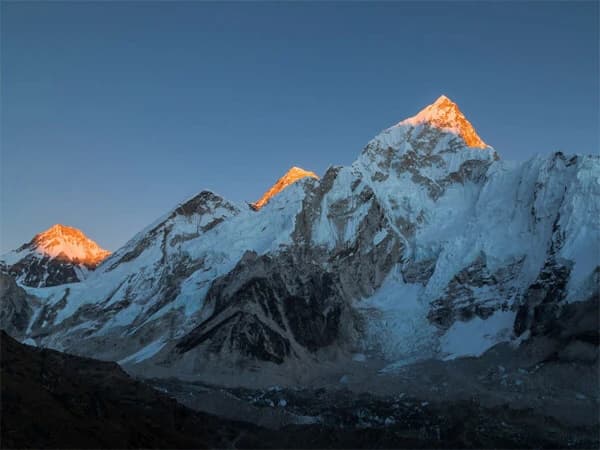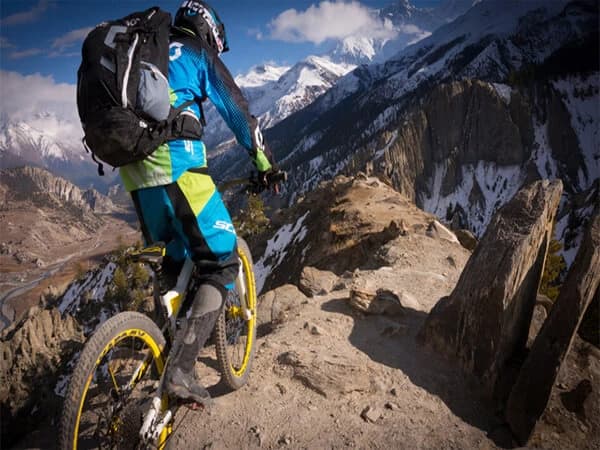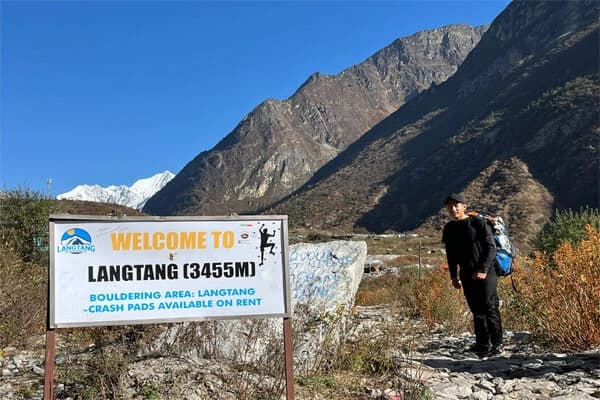What are the differences between trekking and mountaineering?
Trekking and mountaineering are some of the adventure activities in the Himalayas. They both sound alike. However, due to the terrain type, technical skills required, and gears used, one adventure differs from the other.
These activities are similar to hiking and rock climbing to some extent. However, the basic technical skills required for hiking and rock climbing are different from that of mountaineering and trekking in Nepal.
This blog intends to point out some differences between trekking and mountaineering. We have included the mandatory skills and Top 5 Trekking and Mountaineering Destinations in Nepal as well. We also believe that this blog will be of some use for you to choose the right kind of adventure activities in the Himalayas.
Nepal Trekking
By the term Nepal trekking, we understand as a “trip to a specific destination by walking through a steep and sloppy trail for more than a day.” While trekking, you might spend the nights at a tented camps or teahouses, lodges, or home stay sites.
In case of trekking in Nepal, you are guided to a destination from where you witness eye-catching mountain vistas. Flora and fauna of the Himalayan landscapes make your trekking a lifelong memory.
Culture, tradition, and lifestyle of the people living in these regions give a lasting impression. Likewise, you come to learn their culture and tradition while these people also learn yours. In this way, trekking in Nepal is an opportunity for cultural exchange.
Skills Required for Trekking in Nepal
- Map reading, using compass, and understanding GPRS notifications
- Weather forecast to some extent
- Fire making
- Shelter making i.e. setting tented camps or hammocks or fitting in to natural shelters such as cave
- Rescue others in emergency
- Understanding symptoms of acute mountain sickness (AMS) such as altitude sickness, heat exhaustion, hypothermia, etc.
- Communication with local people by respecting their socio-cultural aspects
- Knowledge of sustainable and responsible tourism
- Technical skills to use equipments for strenuous level of trekking
Top 5 Best Treks in Nepal
- Annapurna Circuit Trek
- Everest Base Camp Trek
- Langtang Valley Trek
- Dhaulagiri Circuit Trek
- Mardi Himal Trek
Types of Trekking in Nepal
Nepal is a mountainous country located in South Asian Region between India and China. It shares its borders on the east, west, and south with India while the northern border lies on the verge of the Tibetan Autonomous Region.
Due to the presence of 8 of the 14 peaks above 8,000m in the world, Nepal has been an ultimate destination for trekking lovers. Moreover, 1,310 trekking peaks above 6,000m have supported peak climbing in Nepal.
There are hundreds of destinations for trekking in Nepal. You get a lifelong memory of natural and cultural beauties that you might not find in other parts of the world.
No matter, whether you’re just a beginner trekker or have previous experience of trekking or even you are a daredevil, Nepal has trekking destinations of your kind.
Trekking in Nepal is divided in various categories on the basis of food and accommodation facilities, altitude, duration, difficulty level, etc.
On the basis of permits, trekking in Nepal is divided into two groups: free individual trekking (FIT) and restricted area trekking (RAT).
Free Individual Trekking in Nepal
There are several similarities and differences between FIT and RAT. In the simplest way, free individual trekking in Nepal refers to the journey that you can do on your own any time you desire.
What you need to have is just TIMS Card, conservation area entrance permits, and some local area entry permits. Whether you need a trekking guide or a porter is your choice! You have to manage your food and accommodation yourself.
While trekking to the free individual trekking regions of Nepal, you might face some difficulties as well. To list the difficulties:
- You might miss the right trails to lead to your destinations. You might not be able to complete your trip on the given time.
- You might not be able to book teahouses and lodges en route, especially in the peak seasons for trekking in the Himalayas.
- You might miss out the right information about the natural and cultural heritage sites of the trekking destinations.
- Wild animals might harm you while trekking through the forested and remote areas.
- Conversation with the local people might not be possible as you don’t understand their languages and they don’t understand yours.
- Sometimes, missing the right trails or natural disasters such as avalanches, flood, or landslides might result in accidental deaths.
Due to these threats, we highly recommend you to book a trip with a local tour operator in Thamel, Kathmandu. After all, your safety is the most important concern which the local tour operator in Nepal takes really seriously. We have sometimes heard the news stating the death of international trekkers in the Himalayas.
Restricted Area Trekking in Nepal
Restricted area trekking in Nepal means a journey to wilderness and amongst vulnerable places. Due to the cultural and natural vulnerabilities, the Nepal government has set some restrictions to international trekkers.
Frequent visits by foreigners might cause some impacts to the typical culture and undisturbed nature over such places. Similarly, the Nepal government has put the Trans-Himalayan Region that borders with Tibetan Autonomous Region for security challenges as well.
Cost of Restricted Area Trekking in Nepal
For restricted area trekking in Nepal, you must have at least 2 members in a group assisted by a government registered guide. Above this, you must have a special permit, called restricted area trekking permit issued by the Immigration Department of Nepal.
Restricted area trekking cost is higher than free individual trekking area cost because of the price of restricted area trekking permit.
Likewise, you should spend the nights at tented camps and supply your food yourself. For supplying food and trekking gears, you need more porters. You also need a crew having a captain, cook, and waiter in a camping trekking in Nepal. You have to pay for the crew members as well.
Besides this, restricted area trekking in Nepal is longer than free individual area trekking. Obviously, the longer the itinerary, the higher the Nepal trekking cost!
In addition, you must use domestic flights to reach the trail heads of restricted area trekking destinations. Using domestic flights are costlier than using roadway transportation services.
Upper Mustang Trek, Upper Dolpo Trek, Lower Dolpo Trek, Manaslu Circuit Trek, and Rara Lake Trek are Top 5 Restricted Area Trekking in Nepal.
Mountaineering is Organ of Tourism Industries
Mountaineering is a variation of trekking under mountain tourism. In general, mountaineering refers to the activities of ascending and descending mountains above 5,000m from the sea level. It is more challenging than hiking and trekking.
Mountaineering demands good knowledge of technical skills, physical fitness, and mental strength. For all these skills, you must join a mountaineering center and practice at your level best. You must have knowledge about the mountaineering equipment and how to use them.
To accomplish mountaineering without any risk, you must develop your physical strength. You must be able to withstand long hours of ascending to higher altitude that has low level of oxygen. Likely, you must have skills to survive in snowstorms, walk on glaciers, and cross crevasses without falling into them. Knowledge about safety tips in the Himalayas is the most reliable technique to combat mountaineering difficulties.
Mountaineering in Nepal
Mountaineering in Nepal is the most challenging but most rewarding adventure activity. It includes peak climbing which is more challenging than trekking in Nepal.
Nepal boasts 1,310 peaks above 6,000m including 8 of the 14 mountains over 8,000m in the world. 135 NMA Peaks, known as trekking peaks or mountaineering peaks, it has been both a training center and a holy grail for mountaineering. So, thousands of daredevils come to Nepal to achieve one of their dream to reach atop snowcapped mountains.
Mountaineering in Nepal began in 1945 when the Nepal government opened its Himalayas for foreign trekkers. Just a year later, the 1950 French Annapurna Expedition, led by Maurice Herzog reached atop Mount Annapurna (8,091m) on June 3, 1950.
With this first ascent to a 8,000er in the world, daredevils from all around the world determined to scale mountaineering peaks. When Sir Edmund Hillary and Tenzing Norgay scaled Mount Everest (8,848m) on May 29, 1953, mountaineering in Nepal grew considerably.
Despite several risks, hardship, and harshness, adventure lovers have been doing their level best to reach atop any of mountains. These adventurers have risked their whole life time and again to win over these mountaineering difficulties until their death.
Skills for Mountaineering in Nepal:
In order to make mountaineering mission a complete success, you must have these mountaineering skills:
- Building snow caves or recognizing one if any
- Crevasse crossing and rescue the self and fellow mountaineers
- Understanding of weather conditions of the Himalayas
- Skills to use mountaineering or climbing gears such as crampons, ice axe, rope, etc.
- Techniques for self arrest and rescue
- Navigation skills: map, compass, and rock
- Basic rock climbing techniques
- Avalanche safety measures and companion rescue
- Wilderness First-Aid
To develop these skills of mountaineering in Nepal or anywhere else, you must go to a training center and learn from an expert. Long before beginning your mountaineering project, you must have all these skills. Or else, mountaineering shall remain just a dream!
Top 5 Mountaineering in Nepal Destinations
- Island Peak Climbing
- Amadablam Expeditions
- Mera Peak Climbing
- Lobuche East Peak
- Pisang Peak
Conclusion: differences between trekking and mountaineering?
Although Nepal trekking and mountaineering in Nepal sounds similar, they are rather different adventure activities. Nepal Trekking is more challenging than hiking while mountaineering is more adventurous than rock climbing.
Yes, mountaineering is more challenging than trekking but it rewards you with a lifelong memory of being atop a snowcapped peak.
No matter, whether you are trekking in Nepal or summiting a mountaineering peak, prepare well. For preparation, we recommend you to join a mountaineering training institute in Nepal or your home country.
What are the bases that divide trekking in Nepal trips?
Trekking in Nepal trips are divided on the bases of food and accommodation; itinerary, difficulty level, and altitude accordingly.
On the basis of food and accommodation:
- Teahouse Trekking
- Camping Trekking
- Service Trekking
Time wise
- Short Trek
- Long Trek
Trekking difficulty level:
- Easy
- Moderate or mild
- Challenging
- Strenuous
On the basis of altitude:
- Low altitude Trekking
- High altitude Trekking
How does trekking differ from mountaineering?
At a glance, trekking and mountaineering sound alike. However, there are a few factors such as duration, altitude gain, trail conditions, technical skills, difficulty, etc. Likewise, the duration required for acclimatization also marks the difference between trekking and mountaineering.
Mountaineering demands more technical skills, difficulty level, altitude gain, acclimatization than trekking in Nepal. Talking about acute mountain sickness (AMS), mountaineering is riskier than trekking.

